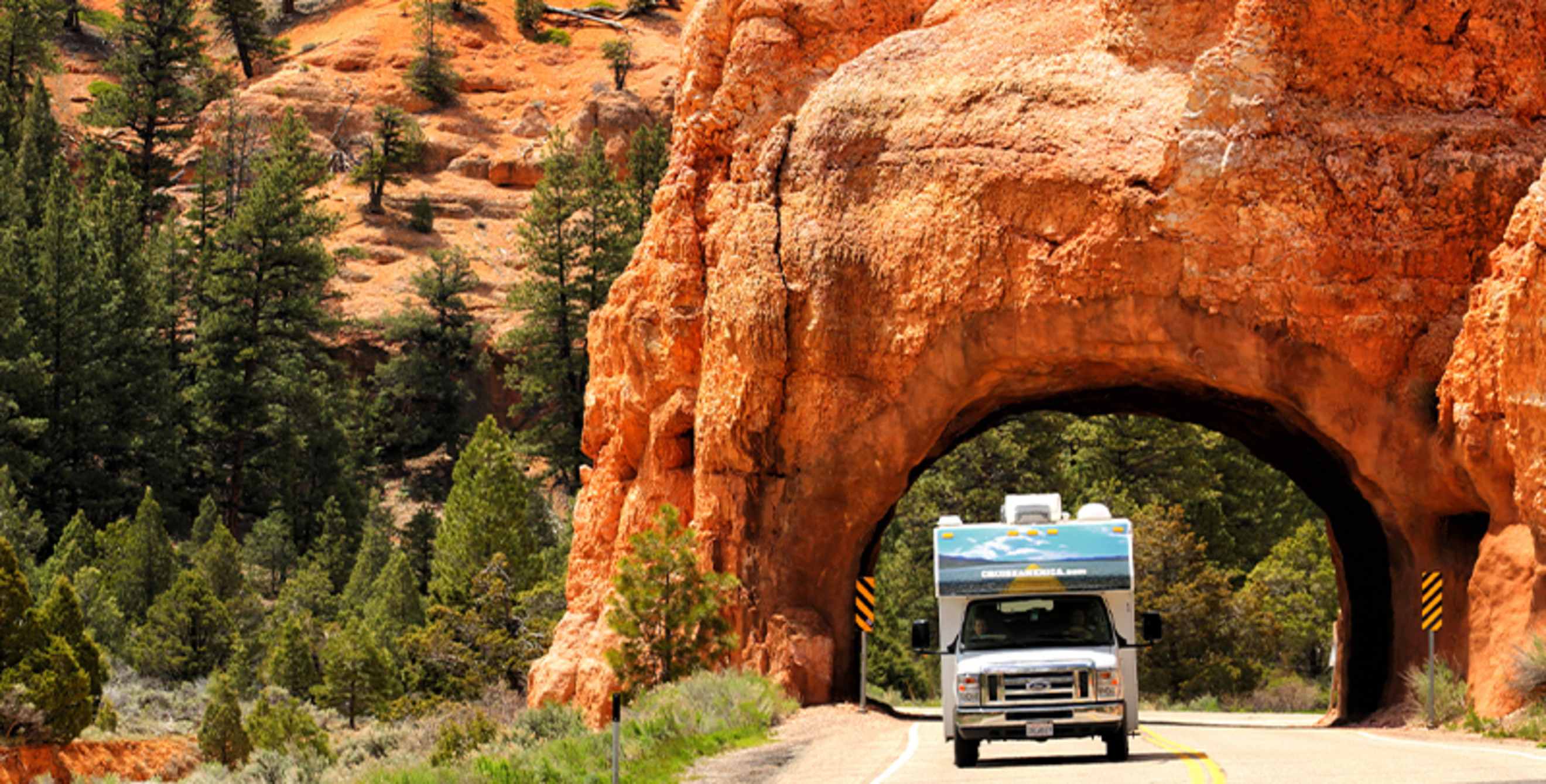
How to Plan and Prepare for the Perfect Road Trip
Get the most out of your next road trip with these steps.

With more than 4 million miles of navigable roadways across the U.S., planning a road trip means choosing your own adventure. You could go for just a weekend or months on end. You could stay nearby or check off states you’ve never visited. You could pitch a tent or opt for hotels. Your road trip can be whatever you want it to be. No matter your preferences, planning in advance will guarantee you get the most out of your time on the road. Here are some important steps to consider before packing up the car and driving away.
Map it out.
Narrow down your options by thinking about how long you want to be gone, what you want to do, and where you want to go. For high-level planning, Harley Sitner, owner of Peace Vans in Seattle, prefers laying out a paper map to plot points (available online through AAA), whereas Clare Healy, a seasoned road tripper originally from California, uses digital maps to determine distances between destinations.
When it comes to picking activities and destinations, you can gain inspiration from blogs, travel guides, friend recommendations, and more. These specifics can include historic sites, tours, restaurants, museums, farmers’ markets, hiking and biking trails, and more curiosities, both well-traveled and off-the-beaten paths.
“We always encourage people to pick one thing a day that will be a highlight,” Sitner says. “Then let the road unfold as it does going there.”
For popular destinations, take note of busy seasons and reservation requirements. Some National Parks, for example, open up their campground and entrance bookings up to three months in advance. However, don’t get discouraged if accommodations are already booked: many parks have first-come, first served options, and there are an increasing number of alternative camping options, such as through Hipcamp, The Dyrt, iOverlander, Sēkr, and elsewhere on public lands.
As you create your itinerary, these are a few other key details to consider:
- Travel times between destinations
- Noteworthy stops along the way
- Park fees and hours
- Accommodations for the night
- Gas or charging stations

Make a realistic budget.
While road tripping can be less expensive than flying or other types of vacations, it’s a good idea to estimate and monitor your spending. With gas prices at a high point, this may be one of your biggest expenditures. Then from there, add up fees for accommodations, rentals, park visits, tolls, and more. To stay within your means, you can also give yourself and kids a budget for souvenirs, snacks, and other indulgences along the way.
Involve everyone.
When it comes to road tripping as a family or a group of friends, Sitner suggests giving everyone on the trip some agency or responsibility in the decision-making process. His ideas include picking snacks, downloading music or podcasts, and choosing stops. That way, each person has something specific to look forward to and be in charge of along the journey.
“Find out what really lights up each person in the car,” Sitner says. “If someone in your party really wants to go see the largest record player or whatever, you should indulge in it.”
Tune ‘er up.
Take care of any maintenance on your car before hitting the road. Sitner suggests letting your local mechanic know that you’re going on a road trip, so they can thoroughly inspect and ensure crucial components are functioning properly. Schedule your appointment for more than a week in advance of your departure so your mechanic has enough time to make any repairs.
Smart Tip: If you visit a AAA Owned Auto Repair Centers, you’ll get a free vehicle inspection with any paid service, such as an oil change or tune-up. If, despite your preparations, you need a mechanic en route, there are more than 7,000 AAA Approved Auto Repair Shops in North America.

Make a packing list.
Wave goodbye to that sinking feeling that you left something behind. Before you’re ready to drag out your suitcase, create a comprehensive list of everything that needs to be stowed away in the car. Healy, who has driven across the country six times, keeps a spreadsheet for road trip necessities, from toiletries to cooking tools to outdoor gear. She adjusts her list based on where she’s going and what activities she has planned.
“If we have what we need, I don’t tend to worry too much about other things,” Healy says.
When packing, Breanne Acio, founder of Sēkr, a database of 50,000 free campsites, looks up weather conditions and safety warnings for insects or wildlife so she can be sure to bring appropriate layers and bug or bear spray. She also recommends making room in the car for luxury items, such as comfortable camp chairs for stargazing or your favorite coffee.
If you expect to prepare food on the road, you should also pack ingredients and cooking gear to reduce stops at grocery stores and maximize time for exploring.
“Road tripping does not mean that you’re roughing it,” Acio says. “It can be as harsh or as comfortable as you plan for.”
Smart Tip: Don’t forget stamps and addresses to send postcards along the way.
Leave room for spontaneity.
A road trip is full of possibilities: an unexpected waypoint, a longer but more scenic route, an extra rest day. These scenarios are all part of the fun. “Let that happen, otherwise you are stressed the whole time trying to meet expectations,” Healy says.
Sitner tells his customers to embrace the spontaneity of the road. Maybe unplug for the trip, bring along some old-fashioned board games, and see what happens. “Leave yourself open to serendipity and trust that the road will provide,” he says.
Get the most from your road trip with a AAA Membership. Not a Member?